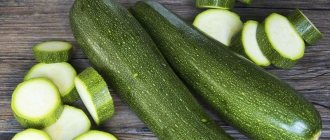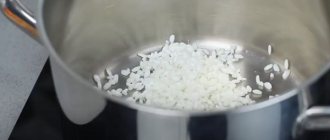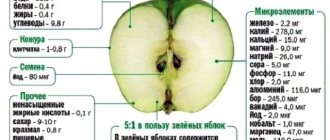Newborn babies are fed only breast milk. At the age of six months, the baby is offered to try zucchini, cauliflower or carrots. Parents, knowing about the benefits of vegetables, strive to make the baby’s first complementary feeding as correct as possible and not cause harm to the baby. Pediatricians have different opinions on which product should a baby start introducing to solid food. Every mother should know how to prepare carrots for the first feeding at home, if the choice fell on this root vegetable.
Homemade carrot puree
Benefits of carrot puree
Carrot puree has many benefits for babies: this root vegetable, first of all, contains beta-carotene. From this source, vitamin A, which is important for the baby’s health, is synthesized; beta-carotene compounds improve vision, accelerate metabolic processes, form bone tissue, skin cells and mucous membranes.
Important! If a baby receives little provitamin A, then its skin becomes dry, flaky, development and growth slow down, and the baby often gets sick.
Carrots, like most vegetables, contain fiber as well as pectin. These components speed up digestion, eliminate bile stagnation and cause a mild laxative effect.
Composition and nutritional value
The root vegetable contains a rich composition:
- Provitamin A;
- Vitamin C, which strengthens the immune system and immune system, promotes easy absorption of iron, improves hematopoiesis, and fights anemia;
- Magnesium, B vitamins - they help calm the nervous system and improve sleep;
- Potassium – improves the functioning of the cardiovascular system and removes excess fluid from the body;
- Alimentary fiber.
What is the value of carrots:
- strengthening bone tissue and teeth;
- improves heart and blood circulation;
- The digestive system begins to work actively;
- immunity is strengthened;
- vision improves;
- the risk of cancer is reduced;
- regeneration of liver and kidney cells is enhanced;
- cleansing the body of waste and toxins;
- skin condition improves;
- energizes;
- low-calorie, but nutritious product, which is why it is recommended for children with increased body weight.
Note! If you consume the root vegetable excessively, carotene jaundice may appear (the skin on your palms and feet will turn yellow).
This condition is harmless, but may cause additional symptoms such as vomiting, nausea and sleep disturbances.
How to choose the right root vegetable
Which formula to choose for a newborn with mixed feeding
When choosing carrots for the first feeding, you should choose carefully:
- the fruits must be of a natural shape, without bends, dense;
- the peel is smooth, the color is bright orange;
- It’s better if the root crops have green tops; they should be cut off when you get home;
- do not buy fruit with a black crown - it has been lying on the counter for a long time;
- the best choice is medium-sized root vegetables that taper towards the end; thick specimens will be tough, with an abundance of nitrates.
Additional Information. To avoid the penetration of pesticides into the dish, you should cut off at least 1 cm of the pulp when peeling.
Secrets of selection and preparation
Photo: Depositphotos.com. Author: AntonioGravante.
The choice of carrots for preparing baby food must be approached with special responsibility. Adhere to the following rules:
- Look for good, tight specimens with a natural shape (no bends).
- The peel should be smooth and bright orange in color.
- Want to choose carrots that last a long time? Look for root vegetables with green leaves - they stay fresh longer. But when you get home, be sure to cut off the green part to avoid moisture loss.
- A blackened top indicates that the vegetable is stale. It is better to refuse such a purchase.
- The most tender and sweetest are medium-sized young carrots (weighing approximately 150 g), tapering at the end. Thicker specimens may be too tough - they will be more difficult for the housewife to handle during cooking, and they also contain more nitrates.
The little ones are fed carrot puree, which is easy to prepare.
- The root crop needs to be thoroughly washed and peeled.
- Before heat treatment, it is advisable to cut off the top and tail of vegetables.
- Boil until tender, then grind in a blender or rub through a sieve.
- To make it softer, the resulting mass is diluted with breast milk or formula.
- Since beta-carotene is a fat-soluble compound, just a couple of drops of vegetable oil should be added to the puree.
- If carrots are not the first vegetable supplement, you can add other foods to the dish.
Carrots are a wonderful and healthy vegetable that practically does not lose their nutritional value when boiled or steamed. On the contrary, under the influence of temperature, the rigid cell walls of the root crop are destroyed, releasing beta-carotene.
Don't want to make puree at home? You can always buy ready-made. Jars of complementary foods are good not only because the quality of their contents is strictly controlled and you don’t have to worry about, for example, nitrates.
Manufacturers offer a homogenized (homogeneous) product to infants 3-5 months old. This effect cannot be achieved at home.
When buying carrot complementary foods in a store, you should carefully study the label. The composition of the finished carrot puree should include: vegetables, water and nothing else. Various food additives can trigger an allergic reaction.
Carrot puree for babies is one of the first vegetables introduced into a child’s diet. Firstly, it is rich in vitamins and microelements. Secondly, carrots are a genetically familiar product, because they are part of many traditional dishes for us. And thirdly, it is easily absorbed and digested by the baby’s stomach. And the appearance is like the icing on the cake. It looks very appetizing, certainly more appetizing than white or pale green puree from a mixture of other vegetables.
It is important to know how to properly prepare carrot puree for babies. There is a certain technology, and following it depends not only the taste of the dish, but also its benefits.
Rules for choosing store-bought puree
Child's eye color from parents - table
Stores sell a lot of ready-made purees in jars. There are some rules on how to select a product:
- look at the expiration date;
- how tightly the packaging is sealed;
- what is included.
Semper brand puree
These jars should be stored either in the refrigerator or in a dark closet. It should be understood that the baby will not eat the whole jar. It is recommended not to store such a product after opening, but on the labels you can often find information that the puree can be stored in the refrigerator for several days. Before use, the contents are heated in a water bath to 36-37 degrees.
Dessert
Applesauce is used in other recipes. When thickeners are added, it makes delicious sweets for tea. You can make desserts from fresh apples or from ready-made puree in a jar.
Jelly
Description. A simple and healthy dessert is apple jelly, which can be sealed in a jar until it hardens or eaten immediately. Cupcake pans will help you make your dessert beautiful. It is recommended to decorate the jelly with whipped cream or powdered sugar before serving.
What is necessary:
- apples - 500 g;
- water - 625 ml;
- sugar - 180 g;
- gelatin - 15 g;
- cinnamon - teaspoon.
How to cook
- Quarter the washed apples, cut off the stem and seed pods.
- Place the slices in a saucepan and cover with water.
- Add sugar and boil.
- Cook until the fruit is soft.
- Grind or rub the slices through a sieve.
- Soak the gelatin granules according to the instructions and heat over the fire (be careful not to boil).
- Combine the swollen warm mixture with applesauce, season, and stir.
- Pour into molds or jars.
- After the mass has cooled and hardened, you can try it.
Marshmallow
Description. Homemade marshmallows made from applesauce are tender and airy, melting on the tongue. For cooking, it is recommended to use varieties with a high pectin content. “Antonovka” with a pleasant sour taste is perfect. You need exactly 250g of applesauce, so the amount of apples may vary. The recipe requires speed so that the marshmallows do not harden prematurely. To lay out the mixture, it is better to use a pastry bag with a nozzle. If you don’t have a tool, you can spread the mixture with a spoon.
What is necessary:
- apples - five pieces;
- egg white;
- sugar - 725 g;
- water - 160 ml;
- agar-agar - 8 g;
- vanillin - half a teaspoon.
How to cook
- Wash and cut the apples in half.
- Cut out the cores and bake the halves until soft.
- Without waiting for it to cool, remove the skin or grind the fruit through a sieve to obtain a homogeneous, tender mass (you can use kitchen utensils).
- Measure out exactly 250 g of puree and add the same amount of sugar.
- Add vanillin, stir and leave for half an hour.
- Soak the agar in water, stir and leave for a few minutes.
- Heat the resulting mixture over medium heat and add the remaining sugar.
- Stirring constantly, cook the syrup for five minutes until thick.
- Add half the egg white to the applesauce and beat with a mixer at medium speed until light in color.
- After adding the second half of the protein, beat the mixture at high speed until white.
- When the mass becomes fluffy and thick, pour in all the syrup in a thin stream.
- Beat in and check the consistency of the mixture: it should flow thickly behind the whisk.
- Line cutting boards or a clean table with parchment paper and prepare a piping bag.
- Squeeze the mixture into identical “roses” onto the paper and leave overnight.
- Separate the halves from the parchment and combine them together into a full-fledged marshmallow (they stick together easily).
- When serving, you can sprinkle with powdered sugar.
Following the algorithm, you can prepare quince, pear, plum, and banana marshmallows. If desired, the halves are coated with vanilla cream.
Using a simple recipe for apple puree for the winter, you can stock up on delicious treats and baby food until the end of winter. Supplement applesauce with fruits, berries, spices, vegetables, and cottage cheese. Try making puree with apricots, plums, quinces, cranberries, and beets. During the cooking process, taste the dessert to determine what is missing - acid, water or sugar.
When to start giving
The baby does not sleep well at night - he spins and groans
Western and Russian pediatricians disagree on when carrots should be introduced into complementary foods. In Russia, zucchini and cauliflower are first introduced, and in Europe - carrots. Foreign doctors claim that the benefits of root vegetables are many times greater than the likelihood of allergies.
In Russia, it is recommended to introduce carrot puree from 8-9 months, provided that the baby has already tried zucchini, cauliflower and potatoes.
How to cook properly
The first vegetable dish is puree. Cooking methods:
- cook in a saucepan;
- steam;
- use a slow cooker or double boiler for quick and uncontrolled cooking.
There are many recipes for carrot puree for babies, all of them have in common that the finished vegetable should be blended with a blender. The dish can be prepared for one-time use, or can be prepared for the winter.
Note! In order for the vegetable to be better absorbed, it should be used together with vegetable oil. Therefore, it is permissible to add a teaspoon of olive oil to the finished dish.
Cooking recommendations:
- Children under one year old eat root vegetables only boiled or as a puree. The vegetable should be soft and boiled.
- Raw carrots are given at 1.5 years, it is better to wait until three. The child must have enough teeth to chew the hard pulp.
Note! During the teething period, the vegetable can serve as a good “chew”, but it is important to ensure that the baby does not bite off whole pieces and choke. You can offer a nibbler with carrots.
- From one year on, the vegetable is given in grated form. You can’t give such a dish before - it takes a long time to digest;
- After a year, you can make cutlets, casseroles, salads, cheesecakes and carrot stew for your baby.
Cooking time
How long to cook carrots for complementary feeding – at least 20 minutes. The vegetable should become soft, so that it can be easily blended in a blender.
Recipe
Before preparing tender carrot puree, you should prepare the necessary ingredients:
- carrots 100 gr. (it is desirable that it be grown in the garden);
- vegetable oil 3 gr. (preferably unrefined olive);
- water or vegetable broth;
- enamel dishes.
Delicate carrot puree for babies step by step preparation recipe:
- The root vegetable is peeled, washed and cut into cubes. You can grate it, but then less water will be needed.
- The vegetable is filled with water and cooked for 20 minutes over medium heat. Grated carrots can be stewed with water.
- Afterwards, cool by draining in a colander.
- Beat the root vegetable in a blender with a small amount of broth or rub through a sieve.
- At the very end of whipping, vegetable oil is poured in and the puree is thoroughly mixed until smooth.
Process of making puree
What to combine with
How to prepare carrots for complementary feeding - add them to other vegetables when cooking. To make products easier to digest, you need to know the rules of combination.
You can combine the root vegetable with:
- vegetables: zucchini, potatoes, cauliflower, broccoli, pumpkin;
- fruits: apple, pear;
- dried fruits: raisins, prunes, but they can be given to the baby after a year.
Useful properties and tips
This root vegetable is useful because it contains many useful elements. Among them is carotene, which supports vision and is a good preventative against Alzheimer's disease and cancer. Since it is absorbed only with fats, it is recommended to add vegetable or butter and dairy products to dishes.
READ ALSO: Using coffee grounds for the garden
There are some tips that will help you decide on a carrot puree recipe and make cooking easier. It's better to remember them:
- It is recommended to serve this dish with sour cream, because it emphasizes the taste well, and carotene is absorbed even better.
- The usefulness of the root vegetable does not change depending on whether it was steamed or cooked in the usual way.
- If the puree is served for dessert, you can add pear, plum or apricot to it. Carrots go best with these fruits.
- To dilute the puree with your own carrot juice, you need to prepare it as follows: peel it, put it in a saucepan coated with oil, and add water. Simmer for about 30 minutes, periodically turning over and adding water.
- To improve the taste of the side dish, you can add a little cumin to it. The main thing is not to pour too much, otherwise the taste will be worse.
https://youtube.com/watch?v=Sle07nvdBuE
Standards for vegetable puree for complementary feeding
Dr. Komarovsky, a Russian pediatrician, recommends introducing puree along with other vegetables no earlier than 7 months. By this time, your baby should try less allergenic foods:
- zucchini;
- potato;
- cauliflower;
- broccoli.
WHO information on introducing complementary foods every month
Note! Formula-fed children may be given carrot puree 1-2 months earlier.
Also, at 7-8 months you can begin to give juice from the root vegetable.
Frequency of use and quantity
How often can you give carrot puree to a child under one year old? It is advisable not to exceed 2-3 times a week. First, the baby is offered a teaspoon of puree in the morning. If there is no negative reaction, which manifests itself in the evening of the current day, you can double the next dosage. The volume is gradually increased to 150 g. by the year.
Juice is offered according to a similar scheme: for the first time a spoon, subsequently increasing the volume offered. At first it is a one-component juice, then you can mix it with orange, apple, pumpkin juice, diluted with water in a 50 to 50 ratio.
Note! It is worth observing the baby for 3-4 days. If negative reactions appear, then introduction to the root vegetable is postponed for 2 weeks.
Nutritional and energy value:
| Ready meals | |||
| kcal 786.1 kcal | proteins 14.5 g | fat 42.9 g | carbohydrates 92.6 g |
| Portions | |||
| kcal 131 kcal | proteins 2.4 g | fat 7.2 g | carbohydrates 15.4 g |
| 100 g dish | |||
| kcal 72.1 kcal | proteins 1.3 g | fat 3.9 g | carbohydrates 8.5 g |
Possible problems
During the first feeding, the mother should carefully monitor the child’s well-being. A negative reaction manifests itself in:
- lethargy;
- drowsiness;
- nausea and vomiting after feeding;
- if root vegetables are consumed too often, jaundice may appear (the skin and whites of the eyes will turn yellow);
- in rare cases, urticaria and even swelling of the laryngeal mucosa occur.
Baby eats carrot puree
Symptoms disappear as soon as the product is eliminated from the diet.
Signs of allergies
An allergic reaction to root vegetables may appear immediately, or maybe after a few hours.
Signs:
- The baby becomes slow and apathetic;
- Pain in the abdomen is disturbing, diarrhea, nausea or vomiting may begin;
- The skin becomes covered with spots, itches, rashes, and irritations greatly bother the child.
Manifestation of allergies
In winter, preparing carrot puree for babies is doubly healthy. During the period of infections and viral diseases, it will strengthen the immune defense, add health and invigorate on harsh cold evenings.
Are there allergies?
Carrots are indeed considered a very allergenic vegetable due to their high beta-carotene content. Eating carrots can cause a rash to appear after the first spoonful. But even if the baby reacted normally to the first tests of carrots, an allergy may appear within a few days of eating this vegetable.
That is why the introduction of carrots into the diet of young children should be very careful. This vegetable can only be given to a healthy child in the first half of the day, observing the baby’s reaction for 2-3 days. If no negative effects are identified, after 3 days you can give your baby another portion of carrots. If a toddler develops a rash or other negative manifestations, carrots are excluded from the menu for a while.
It is difficult to imagine a children's diet without carrots. But how and when to introduce this vegetable into your child’s menu in order to get maximum benefit and minimum harm?
Photo: Depositphotos.com. Author: Zwiebackesser.











